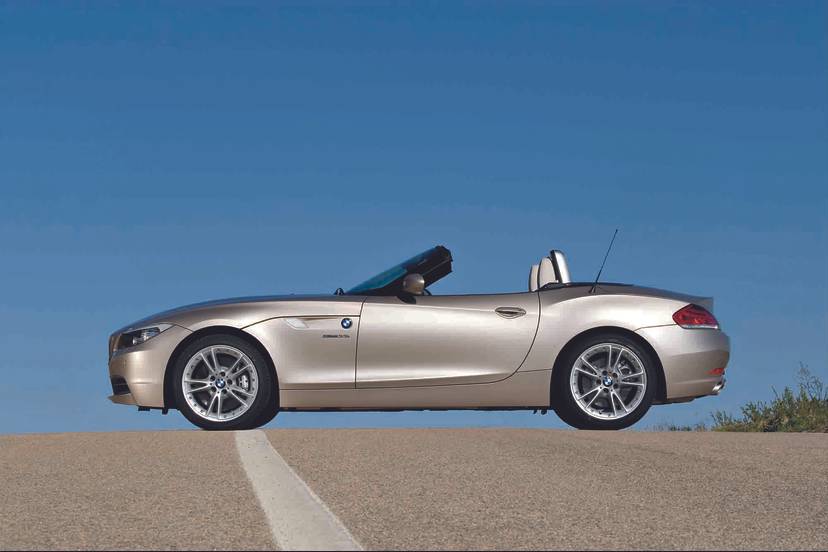
The BMW X5 diesel is a prime example of having your cake and eating it too. A rather expensive cake, mind you.
The twin-turbo, 3.0-liter diesel accelerates like a sports car, yet it is rated at 19 miles per gallon in the city and 26 on the highway. That’s 25 percent better fuel economy than the gasoline version.
Diesels have been popular in Europe for years, but now they are heading to these shores in cars from Audi, BMW, Volkswagen and Mercedes-Benz. They are no longer the loud and smelly engines that many Americans think of when they hear the name. Some argue that advanced diesel engines are more sophisticated than their gasoline counterparts.
BMW’s six-cylinder diesel is a delightful powerplant because it delivers as much torque as the Chevrolet Corvette’s 6.2-liter V-8. BMW said the X5 can scoot to 60 miles per hour in 7.2 seconds.
Variable twin turbos and direct fuel injection with piezo injectors are important factors in the engine’s ability to deliver good fuel economy and gobs of low-end torque. For daily driving, torque is more useful than horsepower, and the BMW diesel delivers its maximum torque at just 1,750 rpm. That means the slightest nudge of the throttle yields immediate motion.
By driving carefully, I was able to average 22.5 mpg in mostly city driving. A full tank yields 585 miles of highway driving.
Like Audi, VW and Mercedes-Benz, BMW injects urea, called AdBlue, into a catalyst to reduce nitric oxides. The BMW meets the most stringent emission standards of California.
AdBlue needs to be refilled at each oil change. The service will be covered under BMW’s no-charge service for the vehicle’s first four years or 50,000 miles.
The diesel’s carbon dioxide emissions are 20 percent lower than those of a gasoline engine.
BMW diesel models have qualified for an Internal Revenue Service Advanced Lean Burn Technology Motor Vehicle Tax Credit because the engine burns significantly less fuel and produces significantly fewer greenhouse gas emissions. X5 buyers can qualify for an $1,800 tax credit.
Diesel is not available at every station, and that can be an issue.
Even though the X5 diesel gets excellent fuel economy, it still has the soul of a performance car and it handles more like a sports sedan than a utility vehicle. BMW uses a double-wishbone front suspension, a longer wheelbase, wider track and a revised four-link rear suspension.
X5 options include active steering, active roll stabilization, electronic damping control, rearview camera and variable second-row seating. Active steering varies the steering sensitivity by speed. Active roll stabilization keeps the body flat in turns, and electronic damping provides adjustable shock absorbers.
The X5’s interior, particularly the instrument panel, is both functional and aesthetic. Large, simple gauges dominate the area in front of the driver, and the center stack has an LCD screen that is used for iDrive as well as the optional navigation system and rearview camera. I’m surprised both aren’t standard on a vehicle in this price segment.
BMW’s iDrive uses a mouselike knob on the console for many functions, including the radio and climate control. Even though iDrive has been simplified and there are separate controls for climate control, the menu system is too complex. Simple tasks are still not as easy as they should be.
In back, the X5 has fold-flat rear seats, a roomier cargo area and an automatic tailgate. A third seat is optional. The test vehicle was not equipped with the third seat, but I suspect it is pretty snug, given the overall size of the vehicle.
Price
The base price of the test vehicle was $51,200. Options included a heated steering wheel, heated front and rear seats, power tailgate, premium sound system, rearview camera, navigation system, head-up display and satellite radio. The sticker price was $65,620.
Warranty
Four years or 50,000 miles.
2009 BMW X5 xDrive35d
Engine: 3.0-liter, 265-hp 6-cyl.
Transmission: Automatic
All-wheel drive
Wheelbase: 115.5 inches
Curb weight: 5,225 lbs.
Base price: $51,200
As driven: $65,620
MPG ratings: 19 city, 26 hwy.
Tom Strongman’s e-mail address is tom@tomstrongman.com.











































